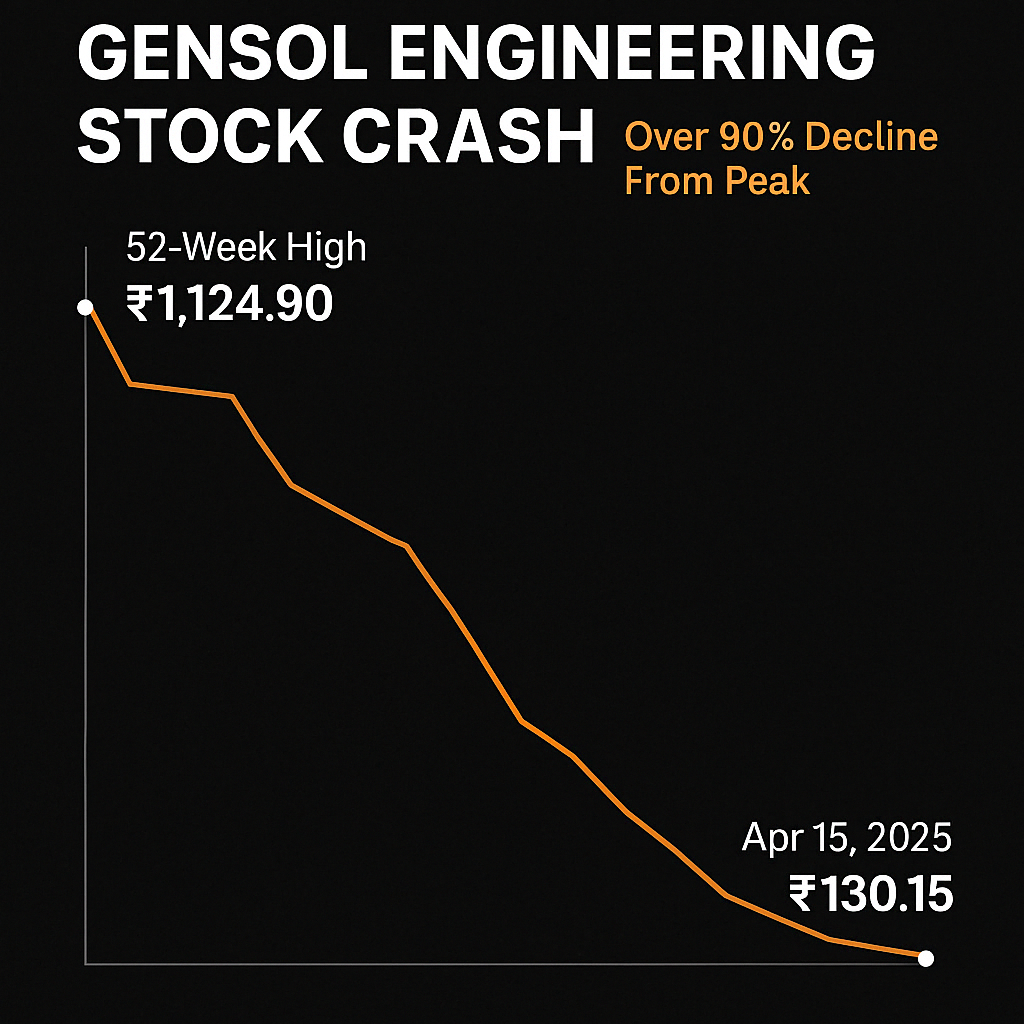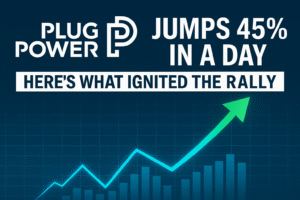
Gensol Engineering, once a promising player in India’s renewable energy sector, has dramatically lost investor confidence, witnessing an alarming stock price decline of over 90% from its 52-week high. The stock, which reached an impressive peak of ₹1,124.90 per share, has recently plummeted sharply to ₹130.15, reflecting deep-seated challenges within the company.
Key Factors Behind the Stock Collapse
1. Credit Rating Downgrades
One major factor negatively impacting Gensol Engineering’s market performance has been severe downgrades by prominent credit rating agencies. CARE Ratings and ICRA have both downgraded the company’s ratings, primarily due to delays in servicing term loans and financial instability. ICRA notably downgraded Gensol’s long-term loan facilities, amounting to ₹2,050 crore, from [ICRA]BBB- (Stable) to [ICRA]D, categorizing it as default-grade. Such downgrades significantly deter institutional investors and severely hamper the company’s borrowing capabilities.
2. Failed Electric Vehicle (EV) Deal
A major blow to investor confidence occurred when Gensol’s ambitious plan to acquire 2,997 electric vehicles from Refex Green Mobility Ltd was abruptly called off. This mutual termination not only hampered Gensol’s strategic plans to expand into the EV market but also conveyed negative sentiments to shareholders and market analysts, fueling uncertainty about the company’s strategic direction.
3. Promoter Stake Sale
Adding to investor woes, Gensol’s promoters recently sold a substantial 2.37% equity stake, translating into approximately 9 lakh shares. This move came shortly after the stock price suffered a steep 70% decline over eight consecutive trading sessions. Promoter stake sales, especially under market distress, often signal internal financial challenges or liquidity issues, exacerbating investor concerns and potentially sparking panic-selling among retail investors.
4. Enhanced Surveillance by Exchanges
Due to the high volatility and sharp decline in its stock price, both the Bombay Stock Exchange (BSE) and the National Stock Exchange (NSE) placed Gensol Engineering under Enhanced Surveillance Measure (ESM). The ESM is a framework designed to monitor stocks experiencing significant volatility or potential manipulation. Being flagged by ESM not only diminishes investor trust but also imposes additional scrutiny and restrictions on trading, reducing liquidity and further pressuring the stock price.
Financial Health Check: A Deep Dive
Currently, Gensol’s financial metrics paint a worrying picture:
- Market Capitalization: Approximately ₹490 crore, sharply reduced from previous highs, indicating severe erosion of investor wealth.
- Price-to-Earnings (P/E) Ratio: Stands at roughly 4.78, seemingly attractive but overshadowed by underlying financial stress and uncertainty about future earnings.
- Promoter Share Pledge: An alarmingly high 81.7% of promoter holdings are pledged, reflecting significant leverage and potential liquidity stress.
- Debt-to-EBITDA Ratio: At an elevated level of 3.27, suggesting significant challenges in managing and servicing existing debt obligations.
Analyst Opinions: Time to Exit or Hold?
Market analysts largely recommend caution:
- Gaurav Sharma, Head of Research at Globe Capital, suggests that investors consider exiting positions given the weak technical and fundamental outlook.
- Kranthi Bathini, Director at WealthMills Securities, also recommends investors stay cautious, urging them to wait until clearer signs of stabilization or recovery emerge before making any buying decisions.
Looking Ahead: Can Gensol Bounce Back?
Despite the current turmoil, Gensol Engineering has outlined a few strategic measures aimed at stabilizing its operations:
- Stock Split Proposal: The company announced a 1:10 stock split, intended to enhance affordability and liquidity, potentially attracting retail investors back into the fold.
- Fundraising Initiatives: Plans to raise additional capital through equity issuance or foreign currency convertible bonds (FCCBs) have been revealed, aiming to shore up finances and stabilize the business.
However, for these strategies to succeed, Gensol must first restore investor trust, address debt servicing challenges, and clearly outline a sustainable growth roadmap.
Conclusion
The spectacular fall of Gensol Engineering stock—over 90% from its peak—serves as a cautionary tale highlighting the risks associated with high leverage, strategic missteps, and governance concerns. Investors should closely monitor Gensol’s next steps, including debt management, promoter actions, and regulatory responses, to gauge whether a genuine recovery is possible or if the downward spiral will continue.
Note: Investors are advised to conduct their own due diligence or consult professional financial advisors before making investment decisions.



